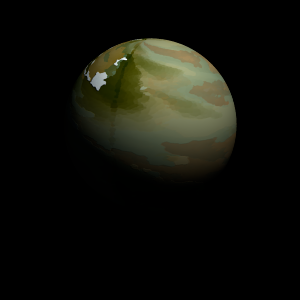|
|
Space Astro
|
Info for exoplanet "Arnisga-hoe"
| Scientific (actual) data |
|---|
| Name | Kepler-819 b |
| Planet status | Confirmed |
| Radius | 0.246 |
| Orbital period | 33.1996 |
| Discovered | 2016 |
| Updated | 2021-02-05 |
| Tconj | 2454990 |
| Publication | Announced on a website |
| Detection type | Primary Transit |
| Alternate names | 2MASS J19412899+3910379 b, K01329.01, KIC 4072526 b, KOI-1329 b, KOI-1329.01, WISE J194128.98+391038.3 b |
| Star name | Kepler-819 |
| Right ascension | 295.37° |
| Declination | 39.18° |
| Mag j | 13.688 |
| Mag h | 13.214 |
| Mag k | 13.163 |
| Star distance | 722 |
| Star metallicity | -0.06 |
| Star mass | 0.86 |
| Star radius | 0.81 |
| Star age | 4.47 |
| Star temperature | 5279 |
| Star alternate names | 2MASS J19412899+3910379, KIC 4072526, KOI-1329, WISE J194128.98+391038.3 |
| Wikipedia article | Kepler-819 b |
Back
| |
| Fictional info (?) |
|---|
| Suggested name | Arnisga-hoe |
| Planet type | Cold planet |
| challenging journey. |
| Atmosphere | Carbonyl sulfide | 44% |
| Hydrogen peroxide | 31% |
| Formaldehyde | 21% |
| Hydrogen | 2.7% |
| Atmospheric pressure | 20 bar |
 |
| Moon | Lislyp De | Small almost round oceanic planetoid |
| Leiet | Very small irregular gaseous asteroid |
| Binix-dessi-tea | Huge round gaseous moon |
| Elmaltrin | Large slightly egg-shaped rocky asteroid |
| Tungr Pakesa | Small slightly egg-shaped oceanic asteroid |
| Ronio | Very small potato shaped rocky moon |
| Aenme Kathe | Very small round crater-filled moon |
| Bisecho-gelcal | Small round ice comet |
| Google search for Arnisga-hoe |
|
Website by Joachim Michaelis
|
|
|
|